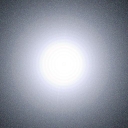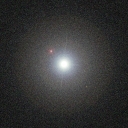‘Umbras’ is Latin for ‘shadows,’ and it becomes a fitting acronym for projects to block the light of stars so that astronomers can see the planets around them. The unwound acronym is Umbral Missions Blocking Radiating Astronomical Sources, which refers to both an imaging technique and a class of space missions. The basic idea is this: deploy a space telescope flying in formation with a second, distant companion spacecraft that carries an occulting screen. We’re looking for direct pictures of planets by reducing a star’s glare, and there are a number of projects aimed at making them, including one we’ve discussed here many times, the New Worlds Imager mission championed by Webster Cash.

I pulled both images in this post from the UMBRAS Web site, where these ideas are explored as a way of pooling talent in the disparate occulter community. Remember, almost everything we know about exoplanets has come from radial velocity studies, microlensing and planetary transits. At best, we are studying variations in starlight that provide solid evidence, but do not yield images or spectroscopy. The next big step in exoplanet observation will surely be direct imaging, even as we continue to make new discoveries with our time-tested methods.

The images are telling. The first (above) shows a bright star whose light obscures the field of view. Any planets around such a star would be drowned in the starshine. The image at left shows the light reduced orders of magnitude by an occulter. Now we can see the light of a possible planet around this star, and if this were an actual photograph, we would be able to measure the planet’s motion and, possibly, take stellar spectra. Clearly, this kind of view takes us into a new realm of exoplanet discovery, and the effort going into finding the best technologies to make this happen should pay off in superior results.
A coronagraph is another way to reduce starshine, but an occulter is not built into the telescope and is thus able to reduce scattered light due to the various optical surfaces and apertures involved. The potential for a clean image is dramatically enhanced. A key problem is to reduce diffraction, which is what happens when light bends around the edges of an object to converge on the opposite side. From the UMBRAS site:
If we consider a square occulter 45 m on a side at a distance of 16,000 km from the telescope, it has a width of 0.58 arcsec. A pattern of light from a blocked star will be visible within the shadow of the occulter. The diffraction pattern within the shadow area will be surrounded by a series of bright and dark (null) fringes with bright diffraction spikes due to straight edges of the occulter.
The goal, then, is to suppress not just the central light from the star being studied, but also to suppress or alter the shape of the diffraction pattern so that planets near the star can be studied. All of this is here conceptualized within the framework of an UMBRAS mission, based on a xenon-based ion thruster propulsion system that would station both telescope and occulter in an orbit around one of the Lagrangian points. This is far enough from the Earth to allow the spacecraft to maintain its alignment without disruptive effects caused by Earth’s gravitational pull. Some design concepts can be found here.
And how would such a mission take shape, once past initial testing? Larger missions might involve the James Webb Space Telescope, as we saw earlier in a study of Webster Cash’s ideas, or (depending on budgetary constraints) smaller space telescopes could be dedicated to the project. With a scalable architecture, an UMBRAS mission might involve relatively small occulters, too, with a screen as minimal as 5-8 meters across, although such a mission would be more technology demonstrator than full-scale mission. Even so, it should be able to observe at least some of the easier targets.
This post is intended to call your attention to the fact that occulter technologies are being approached from a number of different angles. The UMBRAS site offers numerous background papers that should be of use. The key question before us is whether or not an occulter design will be chosen for a planet-finding mission in the relatively near future. From my own reading of Cash’s work and the UMBRAS papers, it seems likely that occulters, especially if capable of working with JWST and therefore not needing a separate telescope, will offer a way to image exoplanets that is much less expensive than older Terrestrial Planet Finder designs.
But more on this tomorrow. As Ian Jordan (Space Telescope Science Institute) has reminded me, the history of occulters is a long and interesting one. I want to probe a little deeper into this subject, and we should look at some of the other ideas posted on the UMBRAS site.


There’s a nice paper from Cash and others that talks about different types of occulters and star shaders, not necessarily rectangular here:
http://www.mit.edu/people/wsimmons/documents/simmons_spie2004.pdf
Enzo
Thanks for the link — very useful!
There’s another related article on New Scientist that is bad news :
ground telescopes, even future ones, will be very limited in what planets
they will be able to image :
http://www.newscientistspace.com/article/dn9179-distant-earths-will-only-be-seen-from-space.html
Basically even VLTI with th adaptive optics and noise filtering algorithms
will only image directly objects with 30 Jupiter masses and only 100 m
telescopes such as OWL will see Juptiers from the ground.
It looks like terrestrial planets wil only be seen from space.
Enzo
Station-Keeping Requirements for Constellations of Free-Flying Collectors Used for Astronomical Imaging in Space
Authors: Ronald J. Allen
(Submitted on 2 Jul 2007)
Abstract: The accuracy requirements on station-keeping for constellations of free-flying collectors coupled as (future) imaging arrays in space for astrophysics applications are examined. The basic imaging element of these arrays is the two-element interferometer. Accurate knowledge of two quantities is required: the \textit{projected baseline length}, which is the distance between the two interferometer elements projected on the plane tranverse to the line of sight to the target; and the \textit{optical path difference}, which is the difference in the distances from that transverse plane to the beam combiner. “Rules-of-thumb” are determined for the typical accuracy required on these parameters. The requirement on the projected baseline length is a \textit{knowledge} requirement and depends on the angular size of the targets of interest; it is generally at a level of half a meter for typical stellar targets, decreasing to perhaps a few centimeters only for the widest attainable fields of view. The requirement on the optical path difference is a \textit{control} requirement and is much tighter, depending on the bandwidth of the signal; it is at a level of half a wavelength for narrow (few %) signal bands, decreasing to $\approx 0.2 \lambda$ for the broadest bandwidths expected to be useful. Translation of these requirements into engineering requirements on station-keeping accuracy depends on the specific details of the collector constellation geometry. Several examples are provided to guide future application of the criteria presented here. Some implications for the design of such collector constellations and for the methods used to transform the information acquired into images are discussed.
Comments: 13 pages, 6 figures, accepted 6/29/07 for the August 2007 issue of PASP
Subjects: Astrophysics (astro-ph)
Cite as: arXiv:0707.0255v1 [astro-ph]
Submission history
From: Ronald J. Allen [view email]
[v1] Mon, 2 Jul 2007 15:38:06 GMT (299kb)
http://arxiv.org/abs/0707.0255